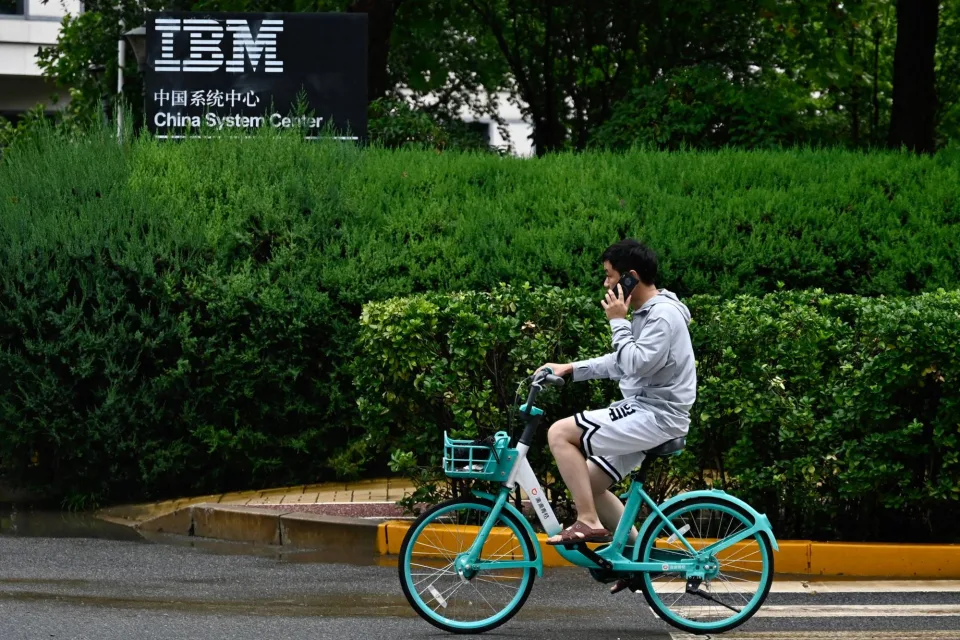Chinese employees at IBM, the prominent US computing giant once seen as a nurturing ground for mainland engineers, have expressed dismay following a brief conference call with the company’s American executives on Monday. The firm, affectionately known as Big Blue, is cutting hundreds of jobs at two local research labs.
The town hall meeting, organized for the affected workers, was scheduled to last half an hour but concluded in just three minutes, according to an internal meeting transcript reviewed by the South China Morning Post and confirmed by an employee.
During the meeting, US-based executives informed staff that IBM had decided to relocate some Chinese operations overseas, attributing the move to market dynamics and intense competition in the mainland’s infrastructure business. They did not entertain any questions.
Do you have questions about the most significant global topics and trends? Find the answers with SCMP Knowledge, our new platform featuring curated content, including explainers, FAQs, analyses, and infographics, all crafted by our award-winning team.
IBM did not immediately respond to a request for comment on Tuesday. However, a company representative stated on Monday that the firm adjusts its operations as necessary to best serve its clients. The representative assured that these changes will not impact IBM’s ability to support clients across the Greater China region.
Over the weekend, China-based IBM employees were blocked from accessing the company’s intranet system. They were subsequently informed that the IBM China Development Lab and China Systems Lab were being shut down. According to reports from local news outlets, over 1,000 employees across Beijing, Shanghai, and the northern port city of Dalian are being laid off.
An anonymous IBM employee disclosed that numerous staff members in Beijing braved heavy rain to attend a meeting at the office on Monday, only to be disappointed by its brevity.
Present on the call were Jack Hergenrother, Vice President of Global Enterprise Systems Development, Ross Mauri, General Manager of IBM Z Mainframe Computers, and Danny Mace, Vice President of Storage Software Engineering.
According to the transcript, Hergenrother encouraged affected employees to arrange private discussions with their respective managers, while Mauri and Mace expressed gratitude for their contributions.
The Beijing employee mentioned that he spoke with his manager, who was also laid off. Employees have been offered severance packages based on tenure, plus three months’ salary if they sign the termination agreement by September 13.
Their last working day will be October 31.
The closure of IBM’s two research labs in China has sent shockwaves through the local tech community. For years, the tech giant had been one of the most sought-after employers for the nation’s top computing graduates.
A former employee, known as “Room e” on the social media platform Xiaohongshu, noted that most of his team members at the China Development Lab were graduates from the country’s top 10 universities in the early 2000s.
However, US companies have been losing their appeal in recent years as China intensifies its self-reliance campaign and strives to reduce dependence on foreign technologies amid growing geopolitical tensions.
In 2014, state-owned banking and telecom enterprises—once major customers of IBM, Oracle, and EMC (now merged with Dell)—initiated a “de-IOE” campaign to replace US products with domestic alternatives.
IBM has become the latest multinational tech giant to implement job cuts in China. This year’s extensive layoffs have impacted employees at various companies including Ericsson, Tesla, Amazon.com, and Intel.
IBM has witnessed a continuous decline in its sales in China over the past few years.
According to the company’s annual report, IBM’s revenue in China plummeted by 19.6% in 2023, in stark contrast to a 1.6% revenue increase across the Asia-Pacific region. Additionally, the financial statement revealed that for the six months ending June 30, sales in China fell by 5%, whereas revenue in the Asia-Pacific region grew by 4.4%.
Additional reporting by Xinmei Shen.
This article originally appeared in the South China Morning Post (SCMP), which has been the leading source for news on China and Asia for over a century. For more SCMP stories, please check out the SCMP app or visit the SCMP’s Facebook and Twitter pages. Copyright © 2024 South China Morning Post Publishers Ltd. All rights reserved.
Copyright © 2024 South China Morning Post Publishers Ltd. All rights reserved.
